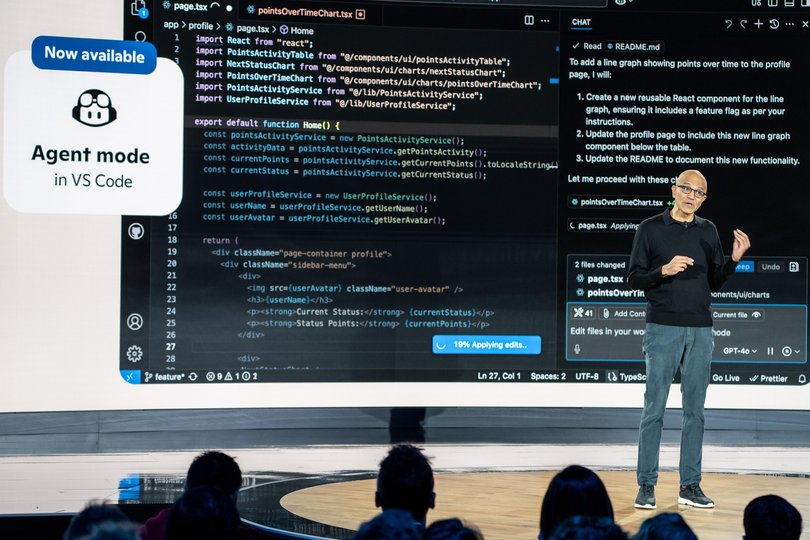THE ECONOMIST: Welcome to the AI trough of disillusionment

When the chief executive of a large tech firm based in San Francisco shares a drink with the bosses of his Fortune 500 clients, he often hears a similar message. “They’re frustrated and disappointed. They say: ‘I don’t know why it’s taking so long. I’ve spent money on this. It’s not happening’.”
For many companies, excitement over the promise of generative artificial intelligence (AI) has given way to vexation over the difficulty of making productive use of the technology.
According to S&P Global, a data provider, the share of companies abandoning most of their generative-AI pilot projects has risen to 42 per cent, up from 17 per cent last year. The boss of Klarna, a Swedish buy-now, pay-later provider, recently admitted that he went too far in using the technology to slash customer-service jobs, and is now rehiring humans for the roles.
Sign up to The Nightly's newsletters.
Get the first look at the digital newspaper, curated daily stories and breaking headlines delivered to your inbox.
By continuing you agree to our Terms and Privacy Policy.Consumers, for their part, continue to be enthusiastic adopters of generative AI. Sam Altman, the boss of OpenAI, recently said that its ChatGPT bot was being used by some 800 million people a week, twice as many as in February. Many already regularly turn to the technology at work.
Yet generative AI’s transformative potential will be realised only if a broad swath of companies systematically embed it into their products and operations. Faced with sluggish progress, many bosses are sliding into the “trough of disillusionment”, says John Lovelock of Gartner, referring to the stage in the consultancy’s famed “hype cycle” that comes after the euphoria generated by a new technology.
This poses a problem for the so-called hyperscalers — Alphabet, Amazon, Microsoft and Meta — that are still pouring vast sums into building the infrastructure underpinning AI. According to Pierre Ferragu of New Street Research, their combined capital expenditures are on course to rise from 12 per cent of revenues a decade ago to 28 per cent this year. Will they be able to generate healthy enough returns to justify the splurge?
Companies are struggling to make use of generative AI for many reasons. Their data troves are often siloed and trapped in archaic IT systems. Many experience difficulties hiring the technical talent needed. And however much potential they see in the technology, bosses know they have brands to protect, which means minimising the risk that a bot will make a damaging mistake or expose them to privacy violations or data breaches.
Meanwhile, the tech giants continue to preach AI’s potential. Their evangelism was on full display this week during the annual developer conferences of Microsoft and Alphabet’s Google. Satya Nadella and Sundar Pichai, their respective bosses, talked excitedly about a “platform shift” and the emergence of an “agentic web” populated by semi-autonomous AI agents interacting with one another on behalf of their human masters.

The two tech bosses highlighted how AI models are getting better, faster, cheaper and more widely available. At one point Elon Musk announced to Microsoft’s crowd via video link that xAI, his AI lab, would be making its Grok models available on the tech giant’s Azure cloud service (shortly after Mr Altman, his nemesis, used the same medium to tout the benefits of OpenAI’s deep relationship with Microsoft). Messrs Nadella and Pichai both talked up a new measure — the number of tokens processed in generative-AI models — to demonstrate booming usage.
Fuddy-duddy measures of business success, such as sales or profit, were not in focus. For now, the meagre cloud revenues Alphabet, Amazon and Microsoft are making from AI, relative to the magnitude of their investments, come mostly from AI labs and startups, some of which are bankrolled by the giants themselves.
Still, as Mr Lovelock of Gartner argues, much of the benefit of the technology for the hyperscalers will come from applying it to their own products and operations. At its event, Google announced that it will launch a more conversational “AI mode” for its search engine, powered by its Gemini models. It says that the AI summaries that now appear alongside its search results are already used by more than 1.5bn people each month.
Google has also introduced generative AI into its ad business, to help companies create content and manage their campaigns. Meta, which does not offer a cloud-computing service, has done the same in its ad business using its open-source Llama models.
Microsoft has embedded AI into its suite of workplace apps and its coding platform, Github. Amazon has applied the technology in its e-commerce business to improve product recommendations and optimise logistics. AI may also allow the tech giants to cut programming jobs. This month Microsoft laid off 6,000 workers, many of whom were reportedly software engineers.
These efforts, if successful, may even encourage other companies to keep experimenting with the technology until they, too, can make it work. Troughs, after all, have two sides; next in Gartner’s cycle comes the “slope of enlightenment”, which sounds much more enjoyable.
At that point, companies that have underinvested in AI may come to regret it. The cost of falling behind is already clear at Apple, which was slower than its fellow tech giants to embrace generative AI. It has flubbed the introduction of a souped-up version of its voice assistant Siri, rebuilt around the technology. The new bot is so bug-ridden its rollout has been postponed.
Mr Lovelock’s bet is that the trough will last until the end of next year. In the meantime, the hyperscalers have work to do. Kevin Scott, Microsoft’s chief technology officer, said this week that for AI agents to live up to their promise, serious work needs to be done on memory, so that they can recall past interactions.
The web also needs new protocols to help agents gain access to various data streams. Microsoft has now signed up to an open-source one called Model Context Protocol, launched in November by Anthropic, another AI lab, joining Amazon, Google and OpenAI.
Many companies say that what they need most is not cleverer AI models, but more ways to make the technology useful. Mr Scott calls this the “capability overhang.” He and Anthropic’s co-founder Dario Amodei used the Microsoft conference to urge users to think big and keep the faith. “Don’t look away,” said Mr Amodei. “Don’t blink.”
